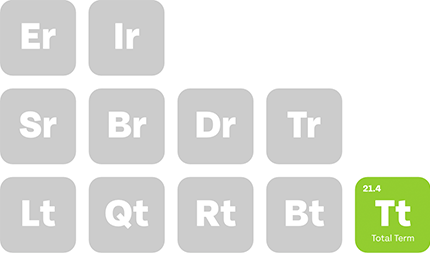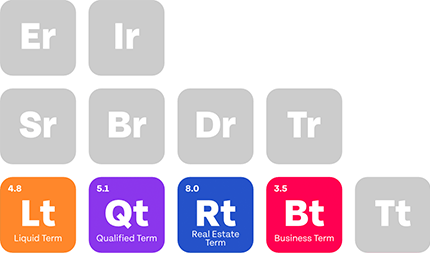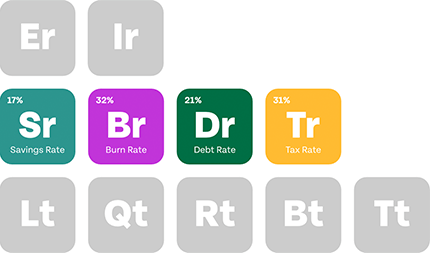When you choose among the many anesthesiology subspecialties, you set the course for the rest of your career. While the average anesthesiologist salary is high across the board, income potential, workload, and career risk can differ from each subspecialty.
Physicians who want to take the reins of their careers and forge their own paths forward need to understand how their chosen subspecialty may impact their income, allowing them to make informed and strategic decisions that will have positive effects on both professional and personal well-being.
Key Takeaways
- The average salary varies between different anesthesiology subspecialties for a number of reasons, including case mix complexity, market demand, and region.
- Cardiac anesthesiology pays the highest average salary for anesthesiology subspecialties, in part because of the required skillset and case acuity.
- Pediatric anesthesiology is on the lower end of anesthesiology salaries, even though it requires a great deal of focus and specific knowledge.
- Pain management and critical care anesthesiology is considered to be a mid-to-high paying field, depending on the practice setting and patient volume.
- Strategic financial planning can ensure you maximize your career earnings for long-term financial peace of mind.
Table of Contents
Factors Impacting Earnings in Anesthesiology Subspecialties
Anesthesiology subspecialties, or specialites within the specialty, require additional training and skills, which are then reflected in compensation levels. While some of the highest-paying anesthesiology subspecialties pay a premium because of procedure complexity and patient acuity, others fall on the lower end of the income spectrum, despite being equally or more challenging. Physician income in each of the anesthesiology subspecialties is also impacted by market demand, reimbursement rates, and the overall economic landscape of healthcare in the region or area.

Pediatric Anesthesiology: Precision Over Profit
Pediatric anesthesiologists focus on infants, children, and their physiology and emotional well-being. Pediatric anesthesiology is a rewarding and challenging field, requiring specialized anesthetic techniques, dosing, and close patient monitoring.
Salary data varies widely, depending upon the source:
| Source | Average Salary |
| Marit Health | $478,200 |
| Salary.com | $247,580 – $283,702 |
| Glassdoor | $443,000 |
| ZipRecruiter | $393,215 |
Pediatric anesthesiology offers a professional path that is more likely to lead to a lower anesthesiologist salary than general or other anesthesiology subspecialties. Smaller patient volume and market demand result in a lower earning potential. Hospitals in larger, urban areas with more dedicated children’s hospitals may pay higher salaries. However, for those who find working with children professionally and personally fulfilling, the tradeoff is worth it.
Cardiac Anesthesiology: Highest Earning Potential
Cardiac anesthesiology is one of the anesthesiology subspecialties with the highest earning potential. Administering anesthesia for heart surgeries and procedures requires a comprehensive understanding of cardiovascular physiology, advanced patient monitoring, and the ability to make split-second decisions during high-risk surgeries.
Physicians in this field can expect to earn a higher salary to reflect the advanced training required and the increased responsibility of this subspecialty:
| Source | Average Salary |
| Marit Health | $541,230 |
| Salary.com | $401,482 – $455,273 |
| Glassdoor | $516,000 |
| ZipRecruiter | $393,215 |
Board certifications and continuing education are important components of a cardiac anesthesiology career, as it’s important to keep pace with new surgical techniques and equipment in a rapidly advancing field. However, with the increased stress and potential for burnout also comes the need for careful career and practice planning.
Pain Management Anesthesiology: A Balanced Opportunity
Pain management anesthesiology requires both procedure-based interventions and long-term patient care and planning. Diagnosing and treating chronic pain conditions is the focus, whether through nerve blocks, injections, and other interventions, or advanced therapeutic equipment.
As such, the average anesthesiologist salary in the subspecialty of pain management is relatively robust, with earnings depending on practice type, local market demand, and patient demographics. A private practice pain management specialist is well-positioned to build and grow their own business, with potentially higher earnings than a hospital-based anesthesiologist who may have more stability but less earning potential.
For anesthesiologists who are looking for procedural diversity, flexibility, and long-term patient relationships, pain management can be both financially and professionally satisfying.
Critical Care Anesthesiology: High Stakes, Solid Pay
Critical care anesthesiologists are tasked with managing critically ill patients, often in an ICU setting. Anesthesiologists in this field must be skilled in making rapid diagnoses and decisions, managing complex medications and protocols in the middle of emotionally challenging and often unpredictable situations.
| Source | Average Salary |
| Marit Health | $480,616 |
| Payscale | $300,000 |
| Physician Side Gigs | $445,000 |
| ZipRecruiter | $393,215 |
As seen above, the salary for anesthesiologists in critical care is generally strong, but the intensity of the work may cause fatigue and eventual burnout for some, if it’s not properly managed. Demand for subspecialty physicians and earning potential are usually determined by the region, hospital size, and availability of resources. Critical care is a high-acuity subspecialty that offers financial stability for those who are passionate about the work.

Comparing Salary Across Anesthesiology Subspecialties
TLDR? Not all anesthesiology subspecialties pay the same. In short, cardiac anesthesiologists usually make the most money, about $540,000 a year. Pain management, critical care, and obstetrical anesthesiologists aren’t far behind, usually making around $445,000 to $480,000. Pediatric anesthesiologists make closer to $400,000–$425,000, in part because they see fewer patients and get paid less.
These numbers come from a combination of the sources listed above. Some use job postings, while others rely on people reporting their own salaries. To cut through the noise, we took the most consistent numbers from across these sites and came up with a “composite median” for each subspecialty. It’s not an exact science, but it gives a solid picture of what anesthesiologists in these fields usually earn.
Of course, pay isn’t the only thing that matters. Changes in healthcare as a whole—like the rise of outpatient surgery centers, shifts in how hospitals hire staff, and ongoing reimbursement challenges—all affect where earnings are headed. The anesthesiologists who stay alert to these trends and adjust as needed are usually the ones who come out ahead financially.
Physician Financial Planning for Anesthesiologists
Maximizing your anesthesiologist salary is only one part of long-term career success and financial security. Regional cost of living, practice structure, and staying on top of changes in the industry also play important roles in your compensation picture.
Anesthesiologists work best with advisors who understand the industry and are equipped to help with contract negotiation, as well as tax and insurance guidance to ensure that both their benefits and income are optimized and protected over the long term. Through strategic planning, physicians can take steps to ensure that their hard-earned income is working just as hard for them as they do.
Here at Physicians Thrive, we specialize in working with physicians and helping anesthesiologists at all stages of their career and professional journey make the right decisions when it comes to their financial well-being. Working with Physicians Thrive translates earning potential into long-term financial security and peace of mind.
Take Control of Your Anesthesiologist Salary
Your choice among anesthesiology subspecialties should reflect both your clinical and financial goals. Choosing the right subspecialty and managing it correctly is the difference between uncertainty and confidence. Contact us at Physicians Thrive today so we can help you build a plan that maximizes your anesthesiologist salary while supporting a well-rounded and fulfilling career.








































